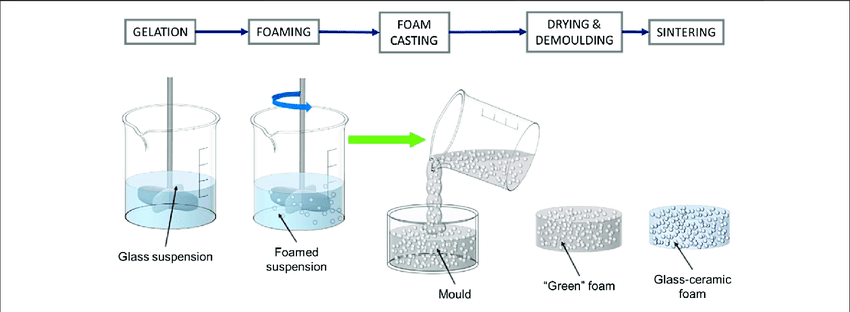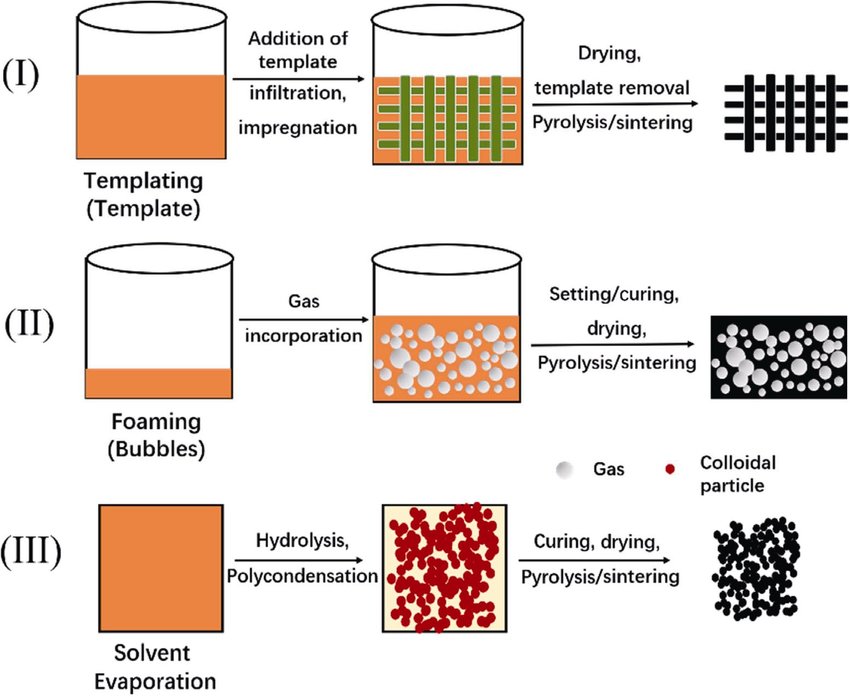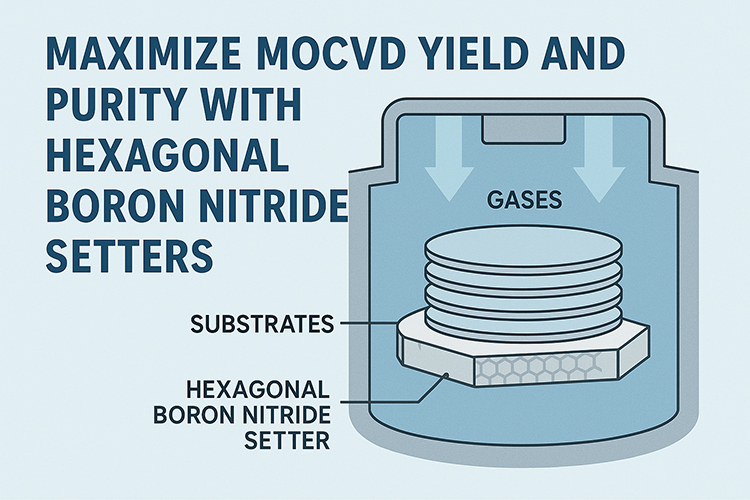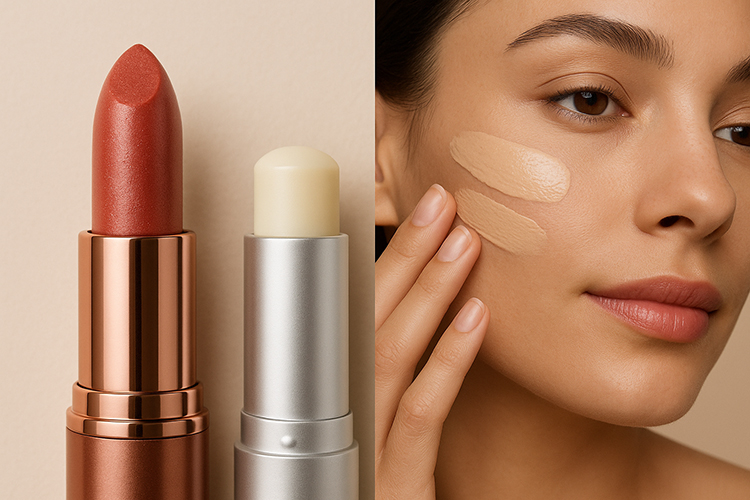Foam Ceramics Manufacturing Processes: A Comprehensive Overview of Six Methods
Introduction
Foam ceramics, with their unique structure and remarkable properties, have carved out a vital niche in the materials science landscape. Characterized by their low density, high porosity, and excellent thermal insulation properties, foam ceramics are increasingly sought after for a wide range of applications, from filters in metallurgical industries to components in thermal insulation and energy absorption devices. The manufacturing processes of foam ceramics are as diverse as their applications, each offering distinct advantages and challenges that influence their suitability for different purposes.
The essence of creating foam ceramics lies in the formation of a cellular structure, a process that can be achieved through various manufacturing techniques. These methods are meticulously designed to control the porosity, cell size, and mechanical properties of the final product, ensuring it meets specific application requirements. From direct foaming and replica techniques to more advanced methods like 3D printing, each approach reflects a unique interplay between material science innovation and practical engineering solutions.
This comprehensive overview delves into six primary methods of manufacturing foam ceramics, shedding light on the intricacies of each process. By understanding the advantages and limitations inherent in these techniques, engineers and designers can make informed decisions, optimizing the performance and cost-efficiency of their projects. As we explore these manufacturing processes, we'll see how the field of foam ceramics continues to evolve, driven by the relentless pursuit of efficiency, sustainability, and new applications that challenge the limits of current technology.
QUICK GUIDE:
- Method 1: Direct Foaming
- Method 2: Replica Technique
- Method 3: Gelcasting of Foams
- Method 4: Emulsion Technique
- Method 5: Additive Manufacturing (3D Printing)
- Method 6: Sol-gel Method
- Comparative Table
In the sections that follow, we'll take a closer look at each of these six methods, providing insights into how they contribute to the advancement of foam ceramics manufacturing and the broader implications for industries reliant on these versatile materials.
Method 1: Direct Foaming
Direct foaming involves creating a foam structure within a ceramic slurry by incorporating a foaming agent, followed by stabilization and solidification to retain the porous structure. This method is distinguished by its simplicity and direct approach to porosity control. The process starts with the preparation of a ceramic slurry, which is mixed with a foaming agent—typically a protein or a synthetic surfactant. Mechanical agitation or the introduction of gas bubbles through various means then induces foaming. The stability of the foam is crucial and is often achieved through the careful selection of additives and control over the processing conditions.

Vieira Carlesso, Mateus. (2008). The Foaming Behavior of Alkane Emulsified Ceramic Suspension: From LAPES to HAPES. 10.13140/RG.2.2.20992.12803.
Applications
The versatility of direct foaming allows for its application across a broad spectrum of industries. It is particularly favored for producing filters in the metallurgical industry, where the controlled porosity and cell structure significantly impact filtration efficiency. Additionally, its use extends to creating lightweight insulation materials for the construction industry, offering superior thermal insulation properties.
Advantages & Limitations
The primary advantage of direct foaming lies in its relatively straightforward process and the ease of controlling porosity and pore size, essential factors in customizing the material's properties for specific applications. However, the method also faces limitations, notably in achieving uniform cell size distribution and ensuring the mechanical strength of the final product. The reliance on the stability of the foam structure during drying and sintering poses challenges, as any collapse or inconsistency can lead to defects and compromised material integrity.
Method 2: Replica Technique
The replica technique, also known as the sacrificial template method, involves impregnating a porous template with a ceramic slurry, followed by the removal of the template material, usually through burning out, leaving behind a ceramic structure that mirrors the original template. This method is particularly useful for creating complex shapes and structures that are difficult to achieve through direct foaming. The choice of template material—often a polymeric foam—plays a critical role in defining the final ceramic's pore structure and overall architecture.

Fiume, Elisa & Ciavattini, Sara & Vernè, Enrica & Baino, Francesco. (2021). Foam Replica Method in the Manufacturing of Bioactive Glass Scaffolds: Out-of-Date Technology or Still Underexploited Potential?. Materials. 14. 2795. 10.3390/ma14112795.
Applications
The replica technique has found significant applications in the production of ceramic components with complex geometries, such as bone scaffolds for biomedical applications, where the mimicry of natural bone structure is crucial. Additionally, it's employed in creating lightweight structural components for aerospace and automotive industries, where the precise control over the material's porosity can lead to significant weight reductions without compromising strength.
Advantages & Limitations
The primary advantage of the replica technique lies in its ability to replicate intricate structures and geometries, offering unparalleled control over the material's macro and micro-porosity. However, this method can be limited by the high cost and complexity of producing suitable templates, especially for highly specialized applications. Additionally, the burnout process requires careful control to avoid defects in the ceramic structure, such as incomplete template removal or structural damage during the process.
Method 3: Gelcasting of Foams
Gelcasting of ceramic foams is a technique that combines gelcasting—a method where a ceramic slurry is solidified using a gelling agent—with foaming processes to produce ceramics with tailored porosity. The process begins with the preparation of a ceramic slurry, which is then foamed either mechanically or chemically. The introduction of a gelling agent solidifies the foam structure, which is subsequently dried and sintered to achieve the final ceramic foam.

Bernardo, Enrico & Elsayed, Hamada & Rincón, Acacio & Crovace, Murilo & Zanotto, Edgar & Fey, Tobias. (2021). Biosilicate® Glass-Ceramic Foams From Refined Alkali Activation and Gel Casting. Frontiers in Materials. 7. 10.3389/fmats.2020.588789.
Applications
Gelcasting of foams is particularly suited for applications requiring ceramics with precise control over pore size and distribution, such as filters and membranes for chemical processing industries. Its application also extends to the biomedical field for creating implants and scaffolds that encourage tissue growth, owing to its ability to produce highly porous structures with interconnected porosity.
Advantages & Limitations
The gelcasting of foams method offers significant advantages in producing ceramics with complex pore structures and high degrees of uniformity. The ability to precisely control the porosity and mechanical properties of the final product makes it a versatile method for various applications. However, the process's complexity and the need for specific gelling agents that can uniformly solidify the foamed slurry can add to the cost and technical requirements, limiting its accessibility for some applications.
Method 4: Emulsion Technique
The emulsion technique in creating foam ceramics involves using emulsions as a template to form pores. In this method, ceramic particles are suspended in a liquid phase that is immiscible with another liquid phase, forming an emulsion. Upon stabilization and subsequent removal of one phase, typically by evaporation or combustion, a porous ceramic structure is left behind. This technique allows for the creation of highly controlled microstructures with uniform pore sizes.
Applications
The emulsion technique has broad applications, notably in filtration systems, where precise pore size can greatly influence filter efficiency. It's also used in creating lightweight structural components and insulating materials, where its ability to produce consistent pore structures can significantly enhance performance.
Advantages & Limitations
Advantages include the ability to precisely control pore size and distribution, essential for applications requiring specific filtration capabilities or mechanical properties. However, the technique can be limited by the complexities involved in emulsion stabilization and the removal of the liquid phase, which can affect the uniformity and integrity of the final ceramic foam.
Method 5: Additive Manufacturing (3D Printing)
Additive manufacturing, or 3D printing, applies layers of ceramic material according to a digital model, allowing for the creation of complex foam ceramic structures with high precision. This process can use various techniques, including binder jetting and selective laser sintering, to achieve the desired porosity and structure.

Kjar, Andrew & Huang, Yu. (2019). Application of Micro-Scale 3D Printing in Pharmaceutics. Pharmaceutics. 11. 390. 10.3390/pharmaceutics11080390.
Applications
This method is at the forefront of creating bespoke porous ceramics for biomedical applications, such as bone graft scaffolds, and aerospace components, where complex geometries and lightweight structures are crucial. It also holds potential for energy applications, including fuel cell and battery components.
Advantages & Limitations
The main advantages are the design flexibility and the ability to create complex geometries that are impossible with traditional manufacturing methods. Limitations include the high cost of equipment and materials and the need for specialized technical knowledge to optimize the printing parameters for ceramic materials.
ACM's Ceramic Spherical Powder for 3d Printing
Method 6: Sol-gel Method
The sol-gel method involves transitioning a solution (sol) into an integrated network (gel) that forms the basis of the ceramic structure. By controlling the chemical conditions during the sol to gel transition, porous ceramic materials can be synthesized with precise control over the microstructure.

Li, Fei & Huang, Xiao & Liu, Ji-Xuan & Jun, Zhang. (2020). Sol-gel derived porous ultra-high temperature ceramics. Journal of Advanced Ceramics. 9. 1-16. 10.1007/s40145-019-0332-6.
Applications
This method is widely used in creating thin films, coatings, and fibers for optical applications, sensors, and catalysts. Its ability to produce ceramics with high purity and uniform porosity makes it suitable for advanced technology sectors.
Advantages & Limitations
Advantages include the ability to produce ceramics at relatively low temperatures, with high purity and fine control over the composition and structure. However, the process can be complicated by the need for precise control over chemical conditions, and the production scale can be limited by the slow gelation and drying processes.
Read more: What are Ceramic Foams? Properties, Manufacturing, and Uses
Comparative Table
This table outlines each method's key advantages and limitations, providing a quick reference for comparing the different approaches to foam ceramics manufacturing. For detailed exploration or consultation on the best method for specific applications, reaching out to a specialist or supplier like Advanced Ceramic Materials (ACM) can offer tailored advice and high-quality materials.
| Manufacturing Method | Advantages | Limitations |
|---|---|---|
| Direct Foaming | Straightforward process, easy control of porosity | Uniform cell size distribution can be challenging |
| Replica Technique | Replicates intricate structures, control over porosity | High cost and complexity of producing templates |
| Gelcasting of Foams | Precise control over pore structure, uniformity | Complexity, specific gelling agents needed |
| Emulsion Technique | Precise control of pore size and distribution | Complexities in emulsion stabilization and phase removal |
| Additive Manufacturing (3D Printing) | Design flexibility, complex geometries possible | High cost of equipment and materials, specialized knowledge required |
| Sol-gel Method | Produces ceramics at low temperatures, high purity | Need for precise control over chemical conditions, slow processes |
Conclusion
The exploration of six manufacturing processes for foam ceramics—direct foaming, replica technique, gelcasting of foams, emulsion technique, additive manufacturing, and the sol-gel method—highlights the diverse strategies available to material scientists and engineers. Each method offers unique advantages and faces distinct limitations, underscoring the importance of selecting the most appropriate process based on the specific requirements of the application. As the field of materials science continues to evolve, these methods contribute significantly to advancements in foam ceramics, promising new developments in manufacturing processes and broadening the range of applications. The future of foam ceramics manufacturing looks bright, with potential innovations poised to further enhance the capabilities and applicability of these versatile materials.
{{item.content}}
LEVE A REPLY
{{item.children[0].content}}
{{item.content}}
LEAVE A REPLY
SUBSCRIBE OUR NEWSLETTER
- Boron Nitride in Cosmetics: Enhancing Performance and Sensory Appeal
- Maximize MOCVD Yield and Purity with Hexagonal Boron Nitride Setters
- What Are the Advantages and Uses of Boron Nitride Ceramic Sheet?
- The Compression Annealing Advantage for Pyrolytic Boron Nitride
- Beyond Insulation: The Surprising Spectrum of Ceramic Thermal Conductivity












